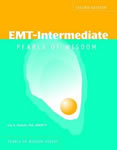All Articles
Addiction Issues & Substance Abuse
HVAC - Heating, Ventilation, Air Conditioning
Animals
Hydrology
Archaeology - Archeology
Insurance
Architecture
Insurance Coverage Analysis
Attorney Fees
International Trade
Automotive - Vehicular
Internet Marketing
Banking
Laws & Procedures
Blockchain Information
Legal Issues
Boating
Life Expectancy - Life Care Planning
Branding - Brand Management
Linguistics
Business Management
Marine - Maritime
Child Welfare
Mediation
Computer Forensics
Medical - Medicine
Digital / Crypto Currency
Medical Records Review
Discovery & Electronic Discovery
Metallurgy
Economics
Obstetrics - Gynecology (OBGYN)
Elder Abuse
Oil & Gas
Employment
Plants & Trees
Failure Analysis
Pools and Spas (Recreational)
Foot / Ankle Surgery
Professional Skills
Forensic Psychiatry
Psychiatry
Healthcare Facilities - Hospitals
Radiology
Hotels & Hospitality
Securities
Human Factors
Speech-Language Pathology
Human Resources
Workplace Violence
More...

LIFE-EXPECTANCY-PAGE ARTICLES MAIN PAGE
. Contact Us if you are interested in having your work published on our website and linked to your Profile(s).
All Articles
Accident Investigation & Reconstruction
Forensic Psychiatry
Alcohol, Tobacco & Other Drugs
Forgery & Fraud
Anger Management & Related Issues
Healthcare Facilities - Hospitals
Appraisal & Valuation
Insurance Coverage Analysis
Aquatics Safety
International Trade
Architecture
Jails - Prisons - Correctional Facilities
Attorney Fees
Land Mapping - Surveying - Zoning
Automotive - Vehicular
Laws & Procedures
Boating
Logistics - Reverse Logistics
Chemical Industry
Manufacturing
Computer Forensics
Mining
Construction
Neuropsychology
Cosmetology: Hair / Makeup
Nursing
Damages
Obstetrics - Gynecology (OBGYN)
Digital Forensics
Patents
Domestic Violence
Pharmaceuticals
Elevators - Escalator - Automatic Doors
Pharmacy & Pharmacology
Expert Witnessing
Plants & Trees
Eyewitness Testimony
Plastic / Reconstructive / Cosmetic Surgery
Family Issues
Professional Malpractice
Fires & Explosions
Recreation & Sports
Food & Beverage
Security
Foot / Ankle Surgery
Telecommunication
Foreign Affairs - Geopolitics
Transportation
Forensic Analysis
Workplace Violence
More...
Featured Articles
There are no active articles here at this time. Please use the search bar, try another category, or contact us if you would like to contribute an article.
This Article is unavailable. Contact Us
Search articles by title, description, author etc.
Sort Featured Articles
Featured resources
Why Not You
by Richard Arlington, III, et al
The Ultimate Guide for Bank...
by Catherine A. Ghiglieri and Jewell D. Hoover
EMT-Intermediate: Pearls of Wisdom
by Guy H. Haskell, PhD, JD, NREMT-P, Robert C. Allen
Follow us










